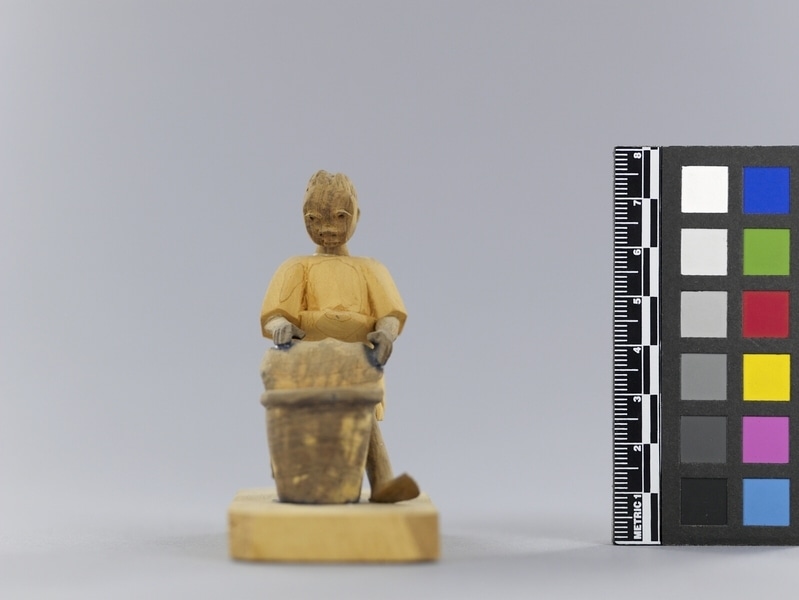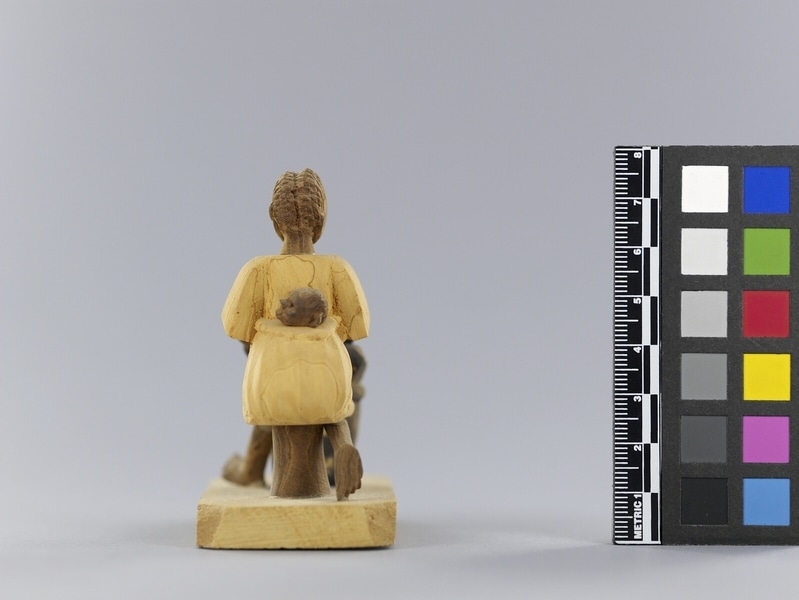Thorn Carving Item Number: Af411 from the MOA: University of British Columbia




Description
Figures representing a woman with a baby in a sling tied to her waist. She is sitting on a stool with her left leg outstretched in front of her and her right leg bent backwards at the knee. She is wearing a sleeved dress and is dipping cloth into a pot. Dress and baby sling are light yellow-brown. Heads, woman's limbs, and stool are dark brown. The pot, cloth, and woman's hands are very dark blue. The base is light brown wood.
History Of Use
Thorn carvings are miniatures depicting scenes from Nigerian life. This type of carving began circa 1930. Thorns vary in size. They can be as large as 12.7 cm. long and 9.6 cm. wide. They are comparatively soft and easily carved. The light yellow-brown thorn and the dark brown thorn come from the Ata tree; the light red-brown thorn comes from Egun trees. The parts are glued together with viscous paste made from rice cooked with water. They are carved by men.
Narrative
Depicting cloth dyeing, a woman's activity.
Cultural Context
craft; tourist art
Item History
- Made in Nigeria before 1972
- Collected during 1972
- Owned by Andrew Stewart and Jessie Stewart before February 8, 1980
- Received from Andrew Stewart (Donor) and Jessie Stewart (Donor) on February 8, 1980
What
- Name
- Thorn Carving
- Identification Number
- Af411
- Type of Item
- carving
- Material
- rice adhesive, wood, egun thorn, atum thorn, dye, paper and fibre
- Manufacturing Technique
- carved and glued
- Overall
- height 7.9 cm, width 7.8 cm, depth 4.0 cm
Who
- Culture
- Yoruba
- Previous Owner
- Andrew Stewart and Jessie Stewart
- Received from
- Andrew Stewart (Donor) and Jessie Stewart (Donor)
Where
- Holding Institution
- MOA: University of British Columbia
- Made in
- Nigeria
When
- Creation Date
- before 1972
- Collection Date
- during 1972
- Ownership Date
- before February 8, 1980
- Acquisition Date
- on February 8, 1980
Other
- Item Classes
- carvings & sculpture
- Condition
- good
- Accession Number
- 0590/0097